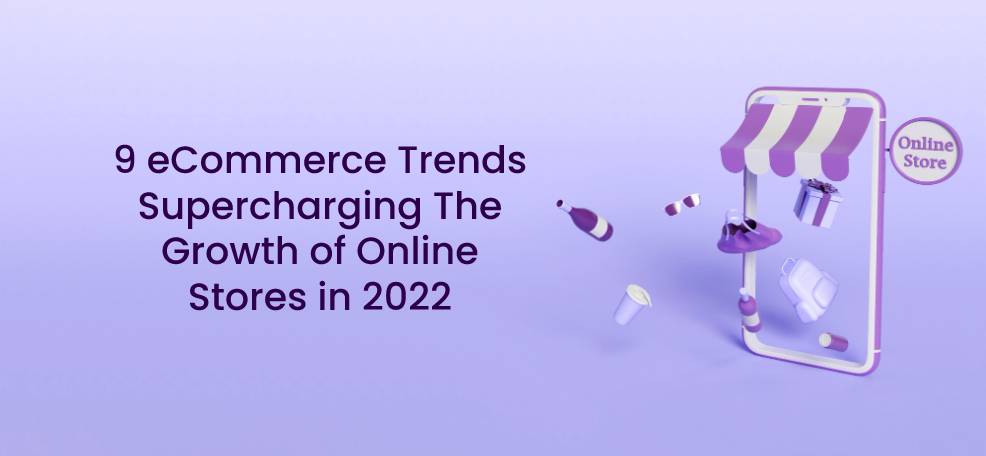Over the last few years, the eCommerce industry has witnessed massive growth and the pace is nowhere close to slowing down. The pandemic further accelerated the adoption and growth. Statista predicts that the eCommerce industry will touch $5.5 trillion by 2022.
And the best part about all this buzz around eCommerce is that an increasing number of brands are launching online stores to reach prospective customers. The key reason for eCommerce online stores is the fact that you have complete control over the customer’s shopping experience, whatever your eCommerce business model.
Online store owners need to constantly adapt and integrate the latest eCommerce trends to stay ahead of the competition. If you’re an eCommerce store owner, this article is for you.
Here are the top eCommerce trends of 2022 that are integral to marketing strategies.
1. Boost your digital engagement
As an online business owner, don’t miss any opportunity to boost your organic presence online. Right from brand marketing, product discovery, and shoppable advertising to proactive customer support, numerous marketing instances are presented by social media to engage with prospects and customers.
The fact that nearly 30% of internet users already purchase directly within the highlight of the social platform that social media cannot be overlooked anymore. As per Statista, the sales from social media channels are expected to triple by 2025.
The quickest and most effective way to keep your social media profiles engaging is by stocking them with vibrant and engaging product photos. A background remover photo editing tool like Blend can help you create stunning eCommerce product photos.
Here’s an example of Barkbox which sells monthly subscriptions for toys and treats for dogs. Their Instagram has high-quality product images being used by their cutest customers (dogs).
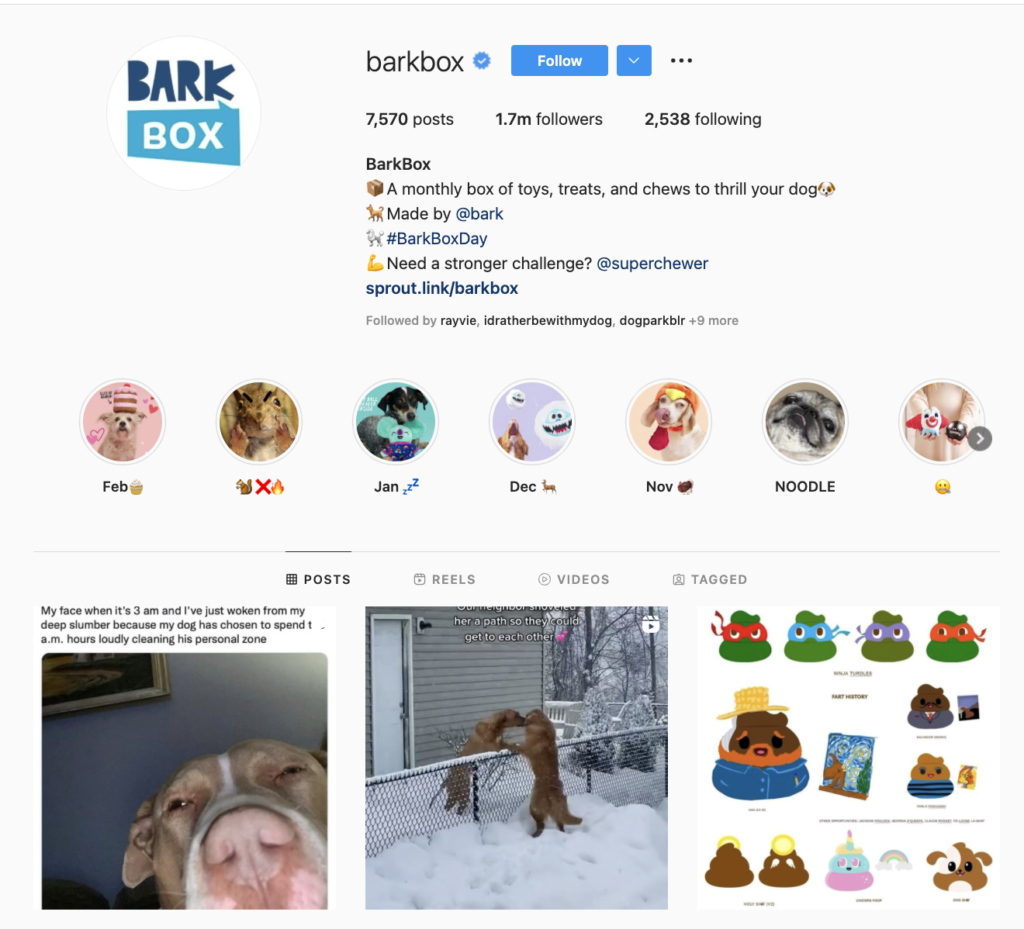
Using hashtags, hosting giveaways, and sharing user-generated content are some ways for eCommerce social media marketing that can be used to build trust and increase social media engagement. Encourage users to share product images reviews.
If your social media channels need some work, now is the best time to start with social media marketing. Be active on channels that are relevant to your target audience instead of being active on all social media platforms.
2. Social commerce
The rise of social commerce is no surprise, considering 91% of social media users access social media through their smartphones.
In simple words, social commerce is defined as buying and selling products directly through social media. Right from product discovery to purchase, the entire journey happens on social platforms.
Social commerce allows customers to discover brands, interact with businesses, and create a frictionless buying journey, leading to more sales for your eCommerce business.
Data from The Harris Poll, as reported on Sprout Social shows that 79% of businesses are already implementing social commerce. What’s your reason for not selling on social media yet?
Facebook Shop, Instagram Shopping, and Pinterest Business allow users to explore new products and complete the checkout right within their apps.
For instance, Ikea uses Facebook Shop to allow customers to find new products and purchase directly, all without leaving the app.
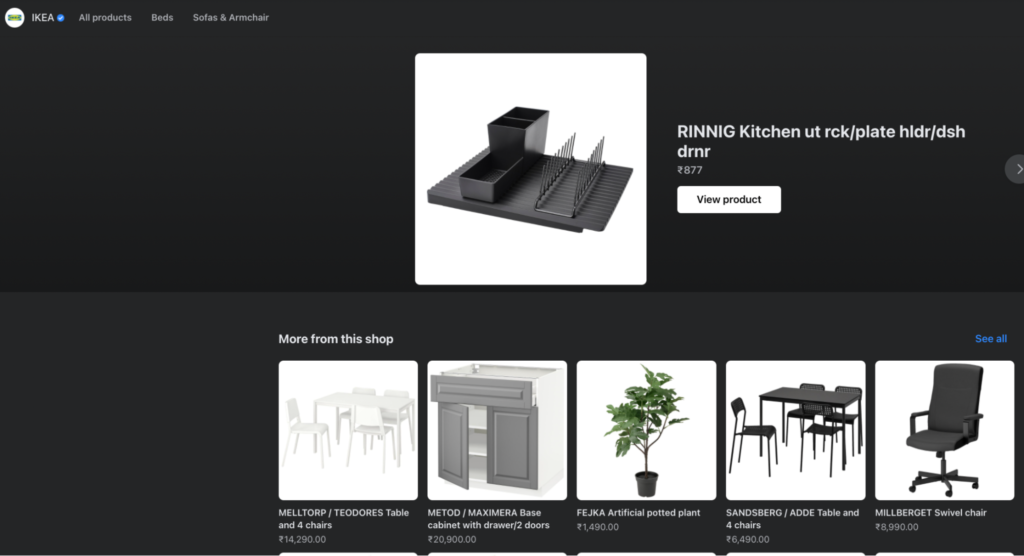
3. Livestream shopping
Have you ever watched a Facebook or Instagram Live where a person promotes specific products and you place an order simultaneously? That is defined as Livestream shopping.
One of the key eCommerce trends of 2022, Livestream shopping is being used by brands and influencers on social platforms like Facebook, Instagram, or TikTok. They show products to viewers and add a purchase link in the description.
Skin and hair care brand Kiehl’s did a live shopping event for its Ramadan campaign last year, to engage its customers in Malaysia.
There were several Instagram Live events with Kiehl’s beauty advisors on Instagram. And for increased awareness, the brand ran a series of ads on Instagram.
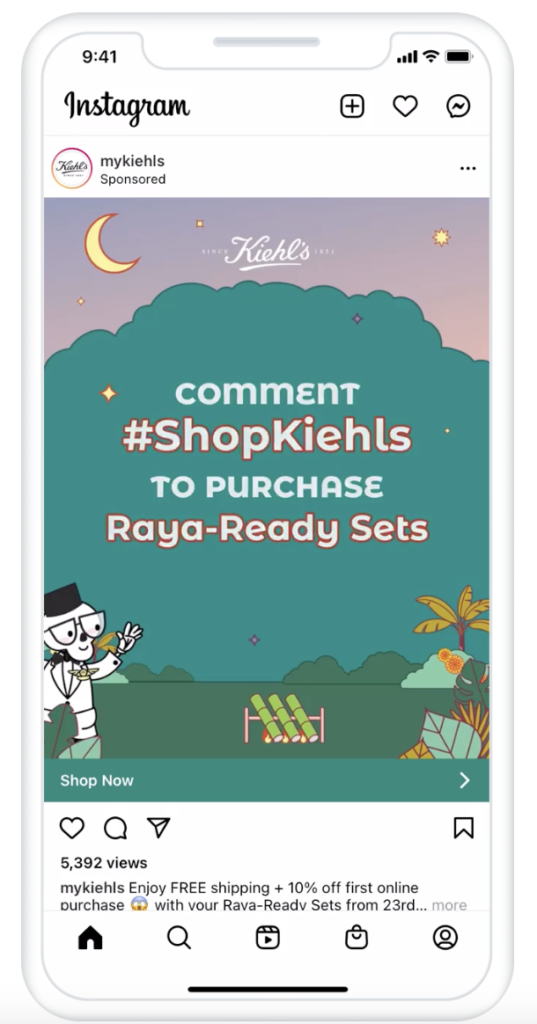
Instagram reports Kiehl saw an 8X return on its ad spend and 50% new customer signups as a result of this campaign.
4. Conversational commerce
In a brick-and-mortar store, a salesperson assists you in the buying process.
In conversational commerce, instead of a salesperson, you interact with a brand on social media via a chatbot or messaging platform. This eCommerce trend allows users to buy and sell products through messaging apps like WhatsApp and Facebook Messenger.
Chatbots are available 24/7, eliminating the need for human reps to answer all queries. Support teams can spend time on crucial tasks and solving issues that the bots cannot answer while the frequently asked questions can be answered by the chatbots.
The best part is that customers prefer to use live chat as a support channel and they do not care if the chat is handled by a human or bot as long as the query is answered.
Let’s take the example of Gymshark, an online store that sells workout clothes. It uses the Messenger bot to enable customers to place an order, check the order status, submit a complaint, and request returns.

5. Video marketing – The meteoric rise of short-format video platform TikTok highlights the importance of videos becoming the de facto mode of content consumption.
Surprisingly, video marketing is not just capable of driving more traffic to your eCommerce store but it also convinces visitors to purchase. A staggering 84% of consumers in a survey said they’ve been convinced to buy a product after watching the product video.
eCommerce retailers and online shop owners regularly leverage different types of videos as a part of their digital marketing strategy. These videos range from demo videos to video testimonials. Don’t underestimate the power of videos in your eCommerce social media marketing strategy.
Use videos to highlight your product features and the challenges it solves for customers. When customers and prospects can see how your product functions and its applications, it increases their confidence in your product and enhances their trust in your brand. The additional benefit is fewer order returns as they know what to expect.
Furthermore, video testimonials humanize your brand while nudging the audience to convert into paying customers.
A great example is Beardbrand’s YouTube channel which features genuine customers. On deeper inspection, you’ll find that both the long and short videos have a similar structure.
They start with style issues and end with sharp-looking customers who are groomed with Beardbrand’s products.
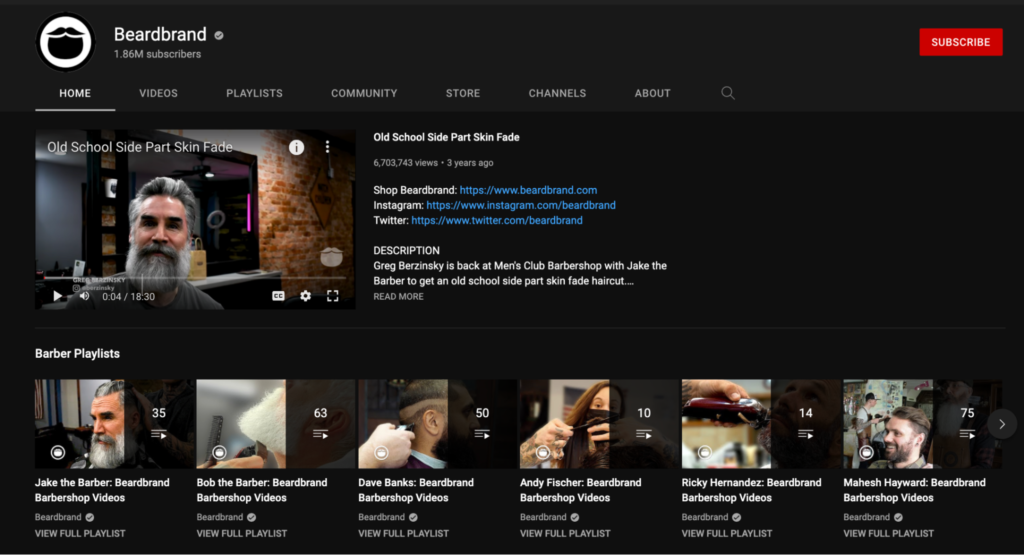
If you’re looking to create product videos, there are a lot of free video editing tools with premade templates. Ensure that you give your videos a standardized look for better brand recognition and branding consistency during the process.
If you’re starting with eCommerce video marketing, the first step is to outline key features and benefits offered by your product. Then, create authentic and relatable videos.
Regardless of the type of videos you use, ensure that the viewer gets genuine value, be it something entertaining, interesting, or useful to your audience.
6. Influencer marketing
It is important to remember that not all your eCommerce marketing has to happen on your own brand channels. Instead, you can find relevant influencers for your eCommerce brand and partner with them, sponsoring content created by them, on their channels. The benefit of influencer marketing includes tapping into an existing audience that is already interested in the products of your industry and trusts the influencer.
You can run an eCommerce influencer marketing campaign based on your budget with nano-influencers, macro-influencers, or mega influencers.
Micro and macro-influencers have a smaller but more engaged following, resulting in higher conversions and ROI you’d get from the influencer marketing campaign.
One of the earliest brands to start with influencer marketing was the beauty brand Glossier. They turned fans of the brand into micro-influencers who spread the word about Glossier products on Instagram. These influencers are given unique promo codes that give them a percentage of the sale every time someone buys using the specific code.

7. Deliver personalized customer experiences
Personalization has always been important to eCommerce business owners. Did you know, that personalization can improve revenues, reduce cart abandonment and increase customer satisfaction?
Social media platforms are increasingly focussing on consumer privacy and the need to protect their data. Platforms like Facebook have made it hard for merchants to dig deeper into their customer profiles and where they come from.
This means brands will have to acquire this information directly from their customer base. For example, selling on platforms like Shopify allows businesses to own customer relationships. A customer relationship management (CRM) tool collects and gives insights directly from customers. This data can be used to personalize experiences.
For example, Yumi is a brand that provides baby food subscriptions. It puts together a menu based on your child’s stage of development, preferences, and food allergies.
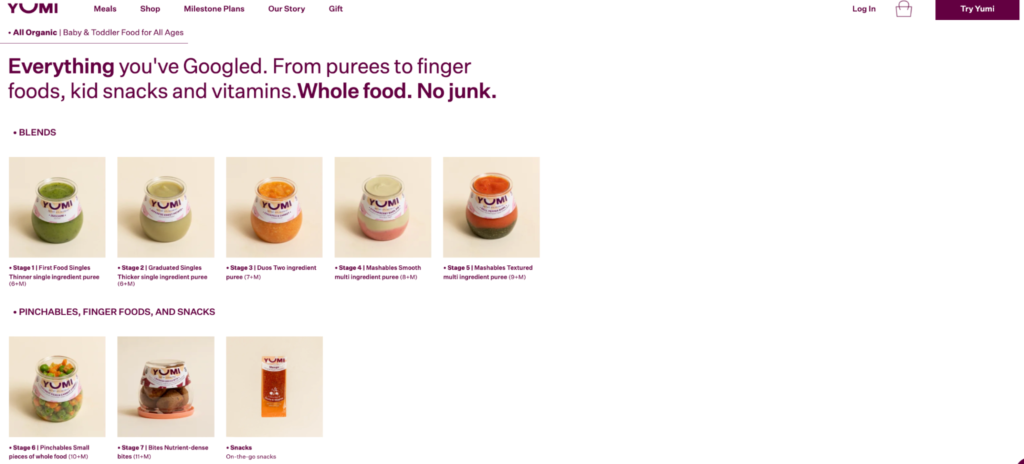
8. Craft effective content
E-commerce brands are exploring different ways not just to attract customers but also to build long-term relationships with them.
For instance, if the user is purchasing something for the first time, you’ll need to show educational content. How-to videos can show how other people use the same products. Guides can highlight the different ways to use your product and the benefits of purchasing it. Communities play an instrumental role in keeping consumers engaged and helping your own customer relationships.
To track the interaction with prospective customers for showing personalized content at each stage of the purchase journey, choosing the best CRM software is useful. What’s of note here is that the messaging should be seamless, regardless of the channel or campaign.
9. Analyze the marketing efforts
It is a well-known truth that it costs less to bring back a previous customer than acquire a new one. So, along with customer acquisition, the key to eCommerce success is paying more attention to customer retention strategies, be it influencer marketing, UGC, or optimizing the customer experience.
Analyze the performance of your social media campaigns to understand whether people are engaging with your content in the first place. Track your brand’s performance on different channels and double down your efforts on the channels giving the best ROI. Social media and customer analytics tools can help you create automated social media reports.
Lead generation software Poptin tracks the performance of your pop-ups and uses different triggers to monitor customer behavior. Equipped with this information, you can target leads and customers better.
Wrapping up
If you’re an online store owner, you know by now the hard work that goes into meeting the evolving customer expectations. Keep an eye on the latest eCommerce trends and integrate the ones that work best for your brand and audience.
Now that you know the eCommerce marketing trends of 2022, it is time to start implementing 2-3 of them for your eCommerce brand.
About the author – Priyanka Desai is the founder of iScribblers, a content marketing and writing platform for technology, B2B, and SaaS companies.
